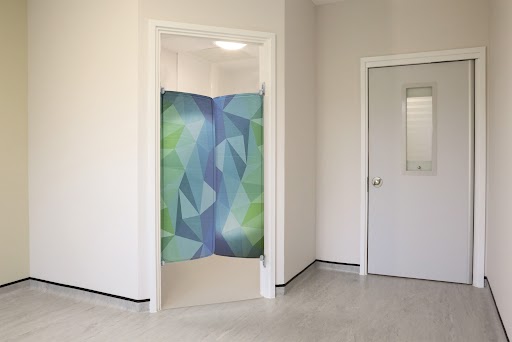
En-suite doors for mental health facilities have posed a problem for many years. But manufacturers are responding to this with a new generation of safer, more-therapeutic solutions
Building products and fixtures for mental health settings have come on in leaps and bounds in recent years, with a focus on improving safety while enhancing the patient experience.
But one area which has lagged behind is the design of en-suite doors.
With the phasing out of dormitory-style accommodation in mental health settings, and a resulting increase in the number of single patient rooms, en-suite provision is becoming the norm.
But, as doors are a key area of risk, and bathrooms the most-common location for self harm and suicide attempts; designers have had to go back to the drawing board to provide new products.
A door behind a door
The University of Manchester’s National Confidential Inquiry into Suicide and Safety in Mental Health Annual Report 2022 revealed that 91% of inpatient suicides take place in the patient bedroom or bathroom, and 49% occur using the door or door hardware.
Therefore, doors still present the highest ligature risk in mental health; and the en-suite door is effectively a door behind another door, making it the biggest unsupervised risk.
Shaun Ridley, head of engineering at Safehinge Primera, explains: “When we began to look at new designs, we spoke to risk managers who shared their continuing concerns with some of the existing solutions.
“These included the fact that doors were cut down with a gap so there was visibility. However, this created a space between the door and the frame, enabling items to be wedged in this gap to create a ligature point.
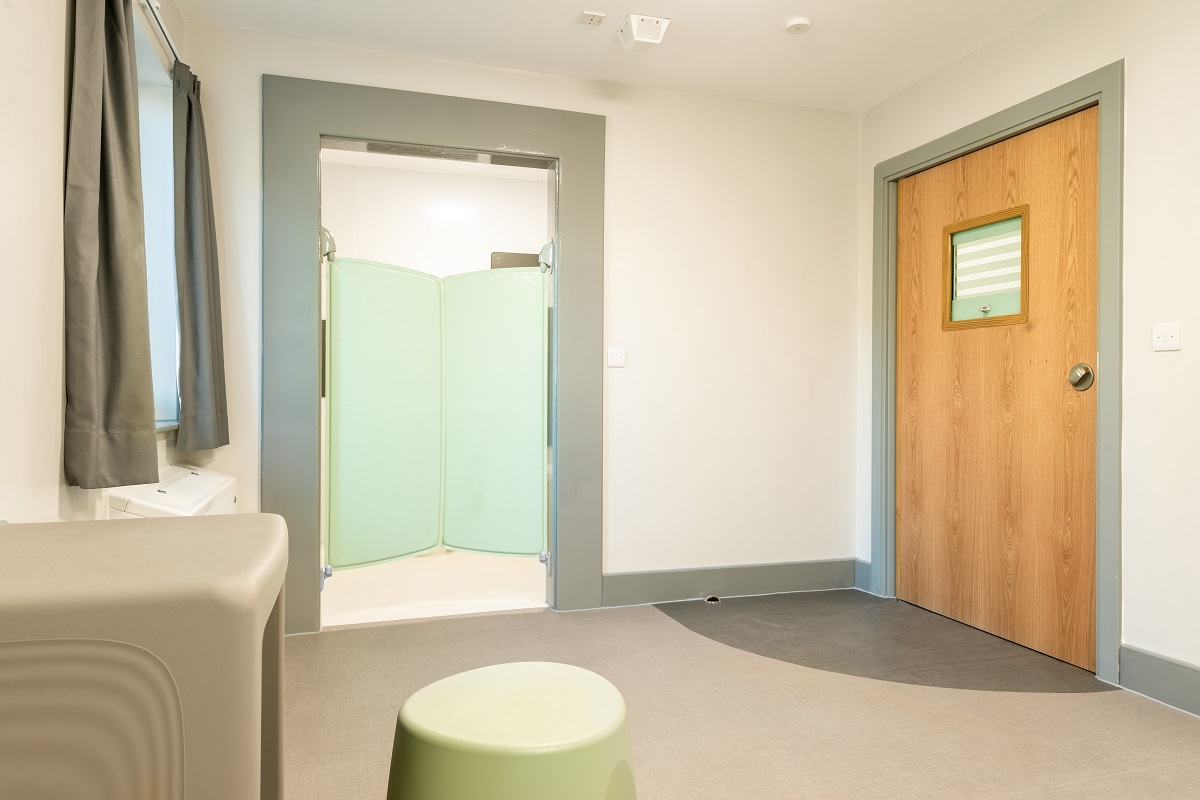
“Also, while full doors with doortop alarms were seen to alleviate the risk at the top of the door, it still left three sides unprotected.
“Often no door at all is considered, but this impacts on the privacy and dignity of patients.”
To provide a new option, the team worked with clinicians, architects, and estates leads to create a design that enables observation, maximised privacy and dignity, but reduces the risk of the door being used as a ligature point.
Releasing the load
The resulting Safehinge Primera En-Suite Door is a load release solution with no known ligature points.
Two saloon-style door leaves remain attached via anti-ligature magnetic pivots during day-to-day use and detach when a ligature is attempted at a weight from 6kgs upwards.
And their smaller size enables clinical staff to perform regular observations with a head and feet check, protecting patient privacy and dignity, which is key to recovery.
Since its release onto the market, the door has been installed into more than 4,000 mental health bathrooms in the UK and overseas, including at Cumbria, Northumberland, Tyne and Wear NHS Foundation Trust and Tees, Esk and Wear Valley NHS Foundation Trust, with no reports of suicide or self harm.
Like other doors in situ within a ward, the traditional challenges have been around preventing barricading and ligature incidents while affording a level of privacy to patients
Kingsway Group has also seen orders for its Shower En-Suite Door increase in recent years.
Company spokesman, Mark Childs, said: “Working closely with our partners we have seen how the challenges and pressures have increased on them to protect this highly-vulnerable group of individuals.
“Like other doors in situ within a ward, the traditional challenges have been around preventing barricading and ligature incidents while affording a level of privacy to patients.
“Hinges, hooks, and doortops are all points in a door system which a patient looking to harm themselves will try and tamper with in order to cause an incident.
“The Kingsway En-suite Shower Door answers these challenges by using a patented full-height hinge system to help prevent ligature attempts along with an anti-trap rubber fin to the closing side of the door.
“This, combined with our sloped doortop and robust moisture-proof finish, provides a strong solution”.
Making a saving
He reports that, where Kingsway doors have been fitted, the feedback shows a reduction in ligature attempts together with lower maintenance costs.
Another company to bring a product to market in response to requests from architects and service providers is Balco.
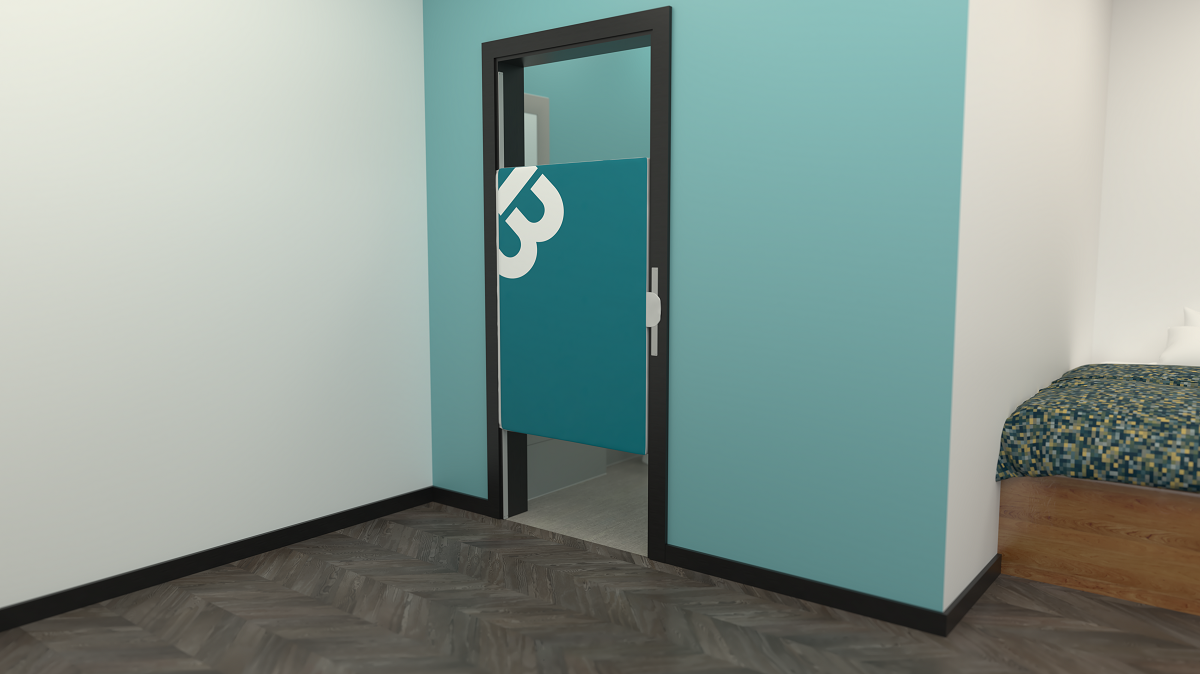
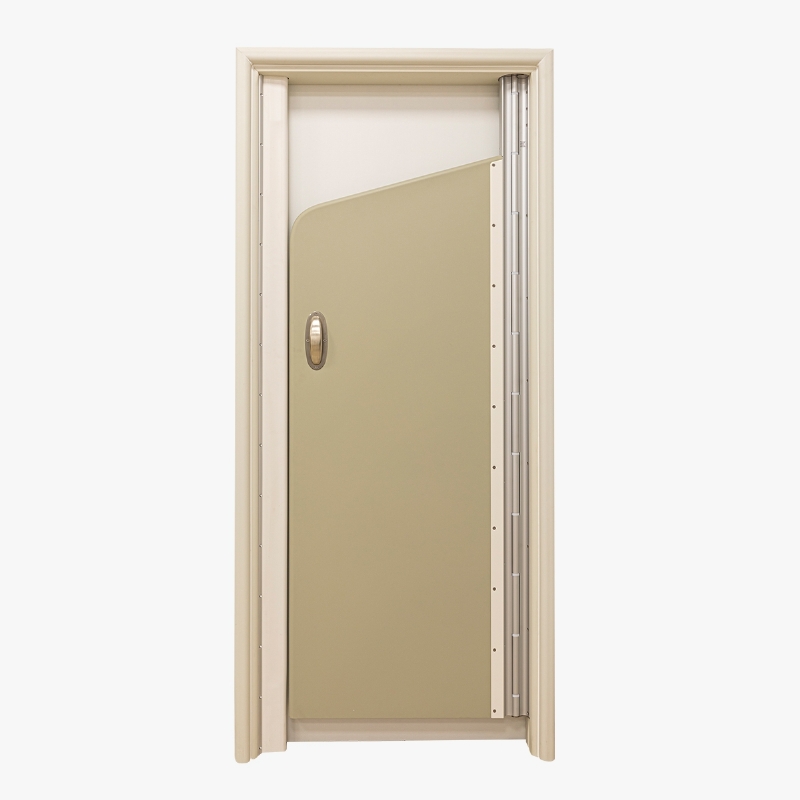
Its SoftDoor range is fire retardant and uses a magnet system fully welded and stitched into a secure pocket. The hinges attach directly to a standard metal doorframe or to discreet hinge plates.
Another key benefit of all the solutions is the ease of fitting as, unlike most traditional doors, rooms do not need to be evacuated during installation.
A spokesman for Yewdale, which launched the SafeDoor in 2015, said: “Traditional lock-back doors weigh a lot and are usually constructed from wood, meaning creating a ligature is easier.
Hinges, hooks, and doortops are all points in a door system which a patient looking to harm themselves will try and tamper with in order to cause an incident
“In addition, when a standard en-suite door is damaged, the service users must be moved out of the room while repairs are carried out, incurring huge repair costs.
“Load-release doors such as Yewdale’s SafeDoor answer this challenge because they are simple to fit and the door doesn’t present any ligature risk and isn’t a weapon risk due to its design.”
Constructed from soft foam, SafeDoor features load-release magnets which ensure the door detaches under excess load.
Managing risk
These are concealed in a fabric that has two layers of defence to secure them in place.
SafeDoor is already in use in trusts across the UK including Mersey Care NHS Foundation Trust and Sussex Partnership NHS Foundation trust.
The spokesman said: “Before the SafeDoors were installed, the Sussex trust had a severe challenge with people using en-suite doors to commit suicide.
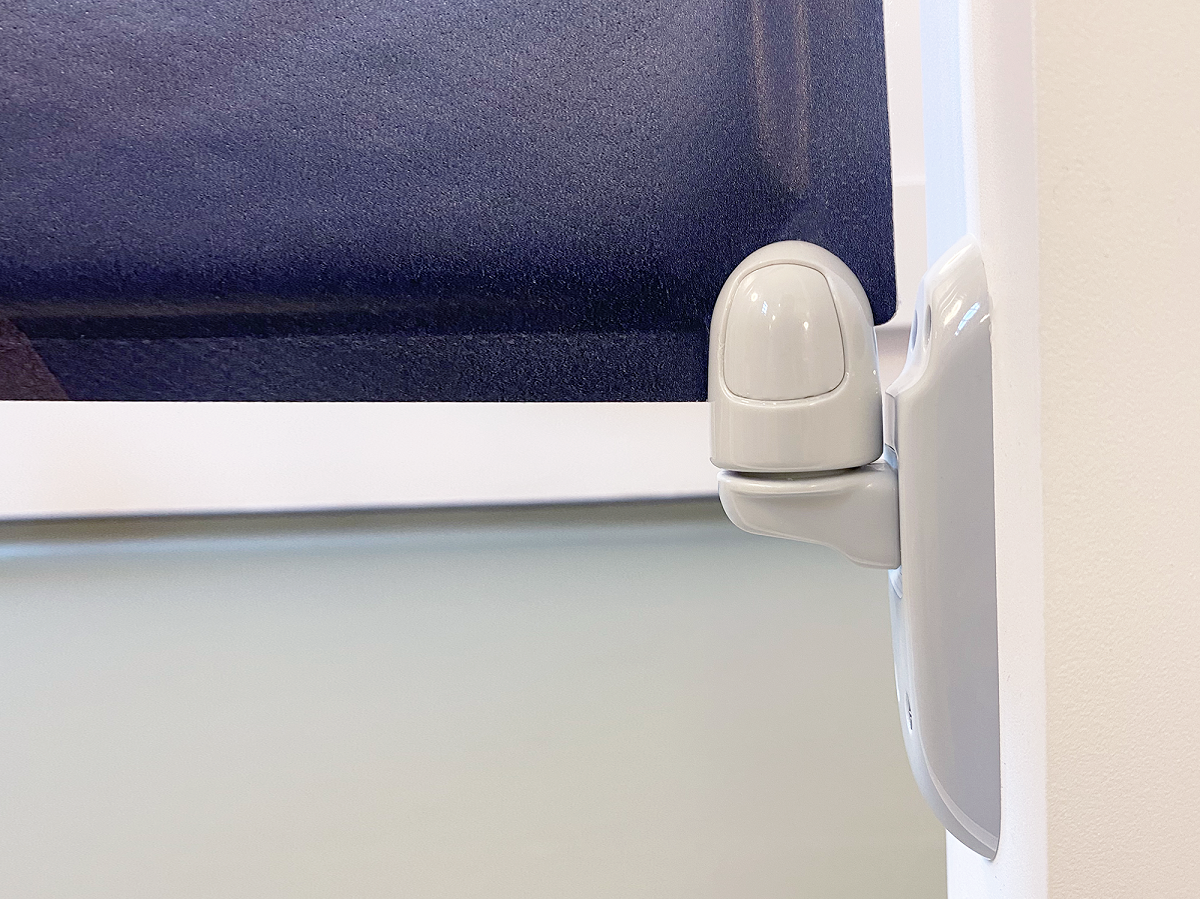
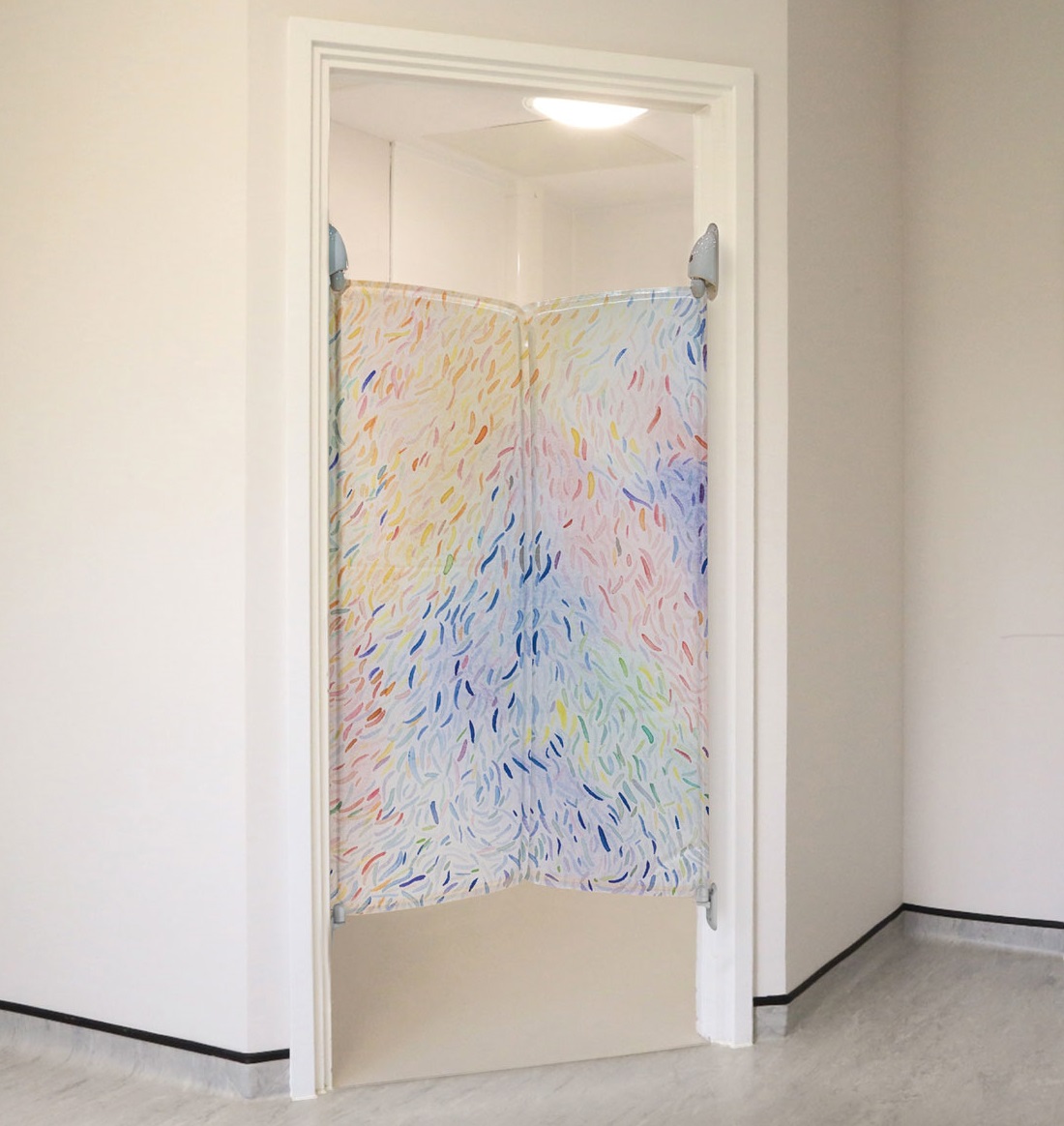
“It had received the highest-possible score on the Manchester Ligature Audit tool which identifies areas of risk.
“However, following the installation of our SafeDoors, the score dropped to nine, the lowest-possible score, and the trust hasn’t had any suicides involving bathroom doors.”
To meet the drive to create more-therapeutic environments for patients all companies offer their doors in a range of colours and many can be printed onto with bespoke imagery.
And, in the future, this focus on the patient experience will continue to drive R&D, according to Ridley.
We are seeing increasing emphasis on therapeutic design in mental health - spaces that are not only physically safe, but also inspire and stimulate patients throughout their journey towards recovery
He predicts: “We are seeing increasing emphasis on therapeutic design in mental health - spaces that are not only physically safe, but also inspire and stimulate patients throughout their journey towards recovery. Think less clinical and more creative, maybe even more personalisation.
The next step
“We’re also experiencing the rapid adoption of technology in mental health too, with data-led insights helping to inform clinical care and I think we’ll see more of that in the future.”
Childs agrees that technology will come into play to help provide the next level of patient safety.
“We are already seeing a growing demand for alarmed doors within ward and bedroom areas and as further tangible evidence emerges we believe this will migrate to an en-suite solution”, he said.
And the Yewdale spokesman told hdm: “As new materials and processes become available, the design of anti-ligature doors will continue to improve.
“We are constantly talking with mental health professionals and gathering feedback to help us design safer anti-ligature systems that will shape the future of mental health environments.
“With this in mind, we are about to release a new version of our SafeDoor, which includes a number of changes to the design.”